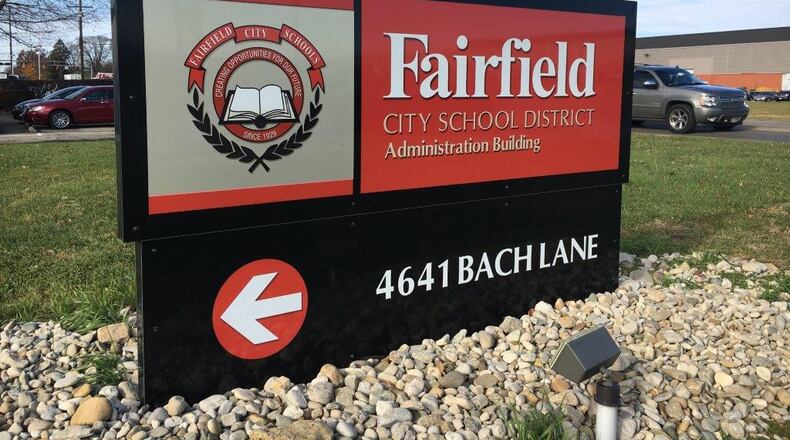Fairfield Schools Superintendent Billy Smith said the 10,000-student district, which has not had a new operating tax increase approved by voters since 2011, is running out of time to address projected budget shortfalls.
Program and personnel reductions are being explored, said Smith, but they alone are not enough to keep the district solvent in coming years as required by Ohio law of all public school systems.
“These are cost-cutting measures that will be induced in an attempt to reduce the size of the levy that is looming,” he told the board Thursday evening.
His goal, said Smith, is “to educate the board and the community about the different kinds of levies that exist and provide the board an opportunity to have discussions and have feedback.”
At the board’s previous meeting in February, district officials had emphasized their projected and growing budget deficits for the next five years.
Similar to other area districts, Fairfield is facing the approaching end of millions of dollars in federal aid provided since the March 2020 onset of the historically disruptive COVID-19 pandemic.
School officials said those ESSER (Elementary and Secondary School Emergency Relief) monies will run out by the end of the 2023-2024 school year.
Fairfield’s last operating tax levy requested and approved by voters came in 2011, when residents approved a 6.5-mill property school tax that was projected to last about three years but has helped the district met its financial needs for more than 11 years.
There are two remaining election days in 2023 for any tax levy to be place on the ballot for voters to decide on. The Aug. 8 election requires any tax issue to be certified by the Butler County Board of Elections by May 10.
And the Nov. 7 election must have tax levies certified by Aug. 9.
“These are very tough conversations,” said Smith of the potential personnel and program cuts now being reviewed.
Fairfield School Board President Brian Begley praised Smith’s multi-board meeting approach in presenting the case for new local tax funding.
“It’s very informative for the public. Facing the reality of what we are talking about … and not having a levy since 201. And now we are in (budget) reduction mode and there is not a whole lot of low-hanging fruit,” said Begley.
“These are tough decisions to make and we will continue to make them.”
The board held no discussion nor took any vote regarding a school tax levy.
Smith said his next presentation at the March 16 board meeting will address potential budget cuts and savings.
About the Author

